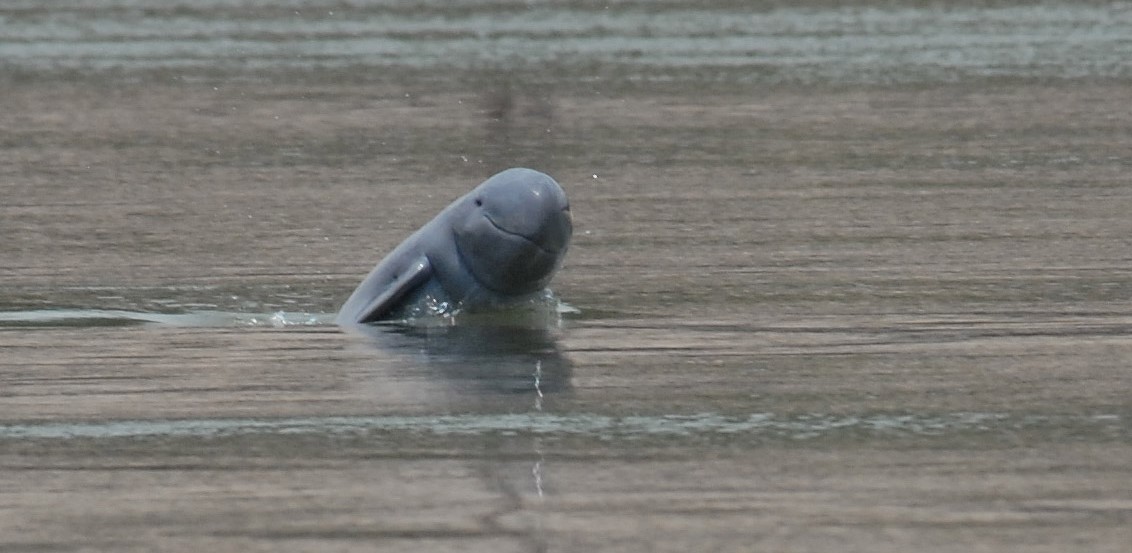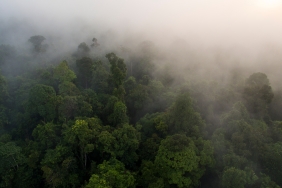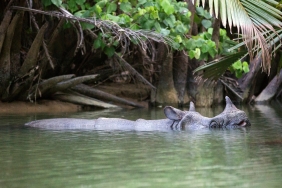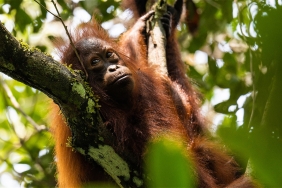CONSERVATION DISCUSSION: WHAT'S WRONG WITH MAHAKAM DOLPHINS?
By: Sani Firmansyah (Supporter Center Officer)
The Mahakam porpoise (Orcaella brevirostris) is mostly found in West Kutai and Kutai Kartanegara regencies. This mammal is designated as the symbol of East Kalimantan Province. However, not many people are familiar with this mammal. Therefore, on Sunday (21/05), WWF-Indonesia held the first Conservation Discussion (DisKo) in Jakarta entitled "What's up with the Mahakam dolphin? ". The discussion was attended by various groups, ranging from students, college students, and the general public. Sri Jimmy Kustini as Communication and Stakeholder Relation Senior Officer, Upper Mahakam Landscape Project was present as the guest speaker.
The discussion began with an explanation of the geographical conditions in Mahakam, East Kalimantan. Participants were then invited to understand the importance of the existence of dolphins. Sri Jimmy said that pesut or freshwater dolphin is a protected species based on PP No. 7 Year 1999. The International Conservation Agency IUCN (International United of Conservation Nature Resources) assigns Mahakam Pesut in the category of critically endangered species (Critically Endangered Species), Cites Appendix I. "The Mahakam dolphin as the symbol of East Kalimantan Province is estimated to have only 75-80 individuals left (2014, RASI foundation). Currently (the Mahakam dolphin) is threatened with extinction due to a decrease in habitat quality caused by human activities and reduced food availability," said the woman who is familiarly called Kak Jimmy.
Biologically, the Mahakam dolphin, which eats fish and shrimp, breathes using its lungs and is classified as a non-fish mammal. Its body is gray to dark blue in color.
This endemic animal from East Kalimantan that always lives in groups has differences between individual pesut with one another, like fingerprints on humans. Pesut has differences in fins and the shape of the nape of the head. The Mahakam dolphin is very important as a bioindicator of water quality. Some rivers in the Mahakam that still have dolphins are confirmed to have good water conditions, as well as indicators of the presence of fish and shrimp that are still abundant.
The information about the Mahakam dolphin, which is rarely obtained, attracted the interest of the participants. They asked several questions related to the porpoise. "Are there any natural predators that threaten the Mahakam dolphin population?" asked Rayan, a student from Brawijaya University, Malang. "There are crocodiles in the Mahakam River. But throughout our research since 2009, we have never found a dolphin killed by a crocodile. Maybe it's because he has such a cute face that crocodiles are reluctant to hunt him," Jimmy joked, followed by laughter from the DisKo participants.
Currently, WWF-Indonesia, together with various communities, is trying to encourage the establishment of pesut habitat as a protected area by the local government. Another effort is to raise awareness and concern of the community around the Mahakam River to jointly protect Mahakam dolphins from the threat of extinction, by applying environmentally friendly fish farming tools because many dolphins are found caught in nets. In addition, the public is also invited not to throw garbage into the river. Trash is allegedly one of the threats to these freshwater dolphins.
"A very educative and informative discussion. For me who previously did not know (about the Mahakam dolphin) became aware and more aware. Hopefully WWF-Indonesia will hold more DisKo and NgoPi like this with other themes," said Rani, one of WWF-Indonesia Supporters.





